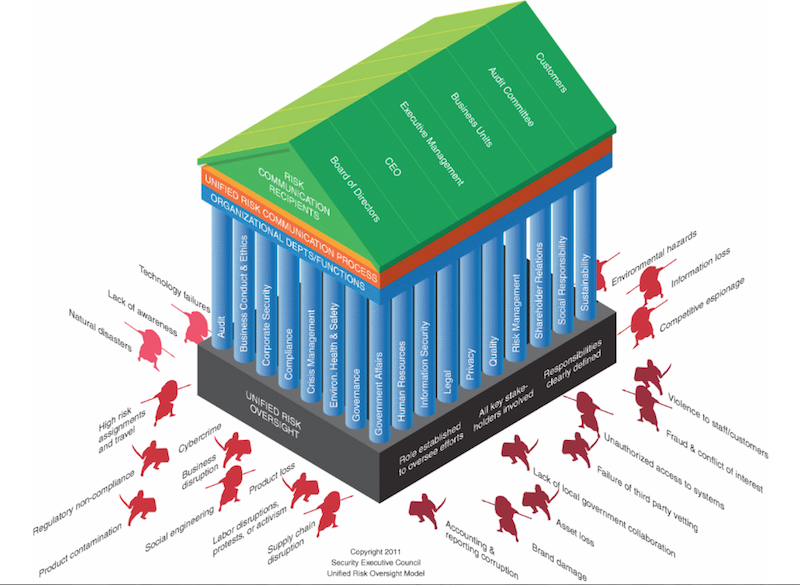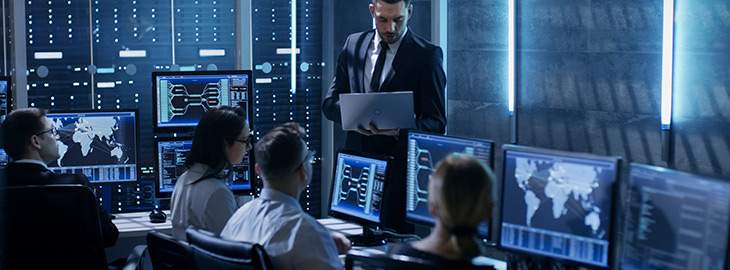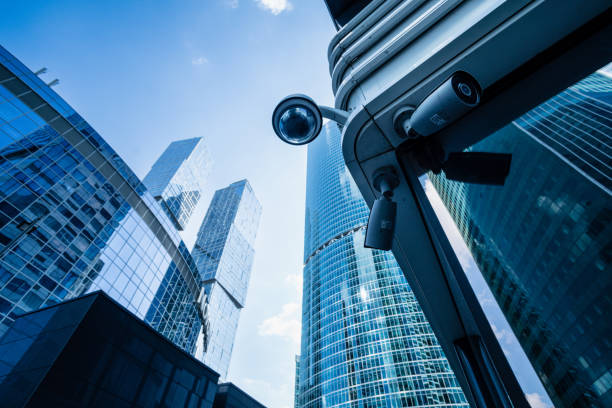A Blueprint for Corporate Security Excellence: Guarding Your Business
A Blueprint for Corporate Security Excellence: Guarding Your Business
Blog Article
From Cybersecurity to Physical Steps: Strengthening Business Safety in a Changing Globe
By combining the strengths of both cybersecurity and physical security, companies can create a detailed protection method that resolves the varied variety of dangers they deal with. In this discussion, we will explore the changing threat landscape, the demand to incorporate cybersecurity and physical safety and security, the application of multi-factor authentication steps, the relevance of staff member understanding and training, and the adaptation of security measures for remote labor forces. By taking a look at these crucial areas, we will gain beneficial understandings right into how organizations can enhance their company safety and security in an ever-changing globe.
Understanding the Altering Danger Landscape
The developing nature of the modern world demands an extensive understanding of the transforming hazard landscape for efficient business security. It is vital for companies to stay notified and adjust their security measures to attend to these advancing threats.
One secret element of recognizing the changing threat landscape is acknowledging the different sorts of hazards that companies encounter. Cybercriminals are constantly establishing new methods to manipulate susceptabilities in computer system systems and networks. These threats can range from malware and ransomware attacks to phishing scams and social design methods. In addition, physical threats such as theft, vandalism, and business reconnaissance continue to be prevalent issues for organizations.
Surveillance and examining the danger landscape is necessary in order to determine prospective threats and vulnerabilities. This includes remaining updated on the current cybersecurity patterns, examining threat intelligence reports, and performing normal danger evaluations. By recognizing the changing threat landscape, companies can proactively execute appropriate security actions to alleviate dangers and secure their assets, reputation, and stakeholders.
Integrating Cybersecurity and Physical Protection
Integrating cybersecurity and physical security is crucial for detailed corporate defense in today's electronic and interconnected landscape. As organizations significantly count on technology and interconnected systems, the borders in between physical and cyber risks are becoming obscured. To effectively guard against these threats, an all natural technique that incorporates both cybersecurity and physical safety and security actions is vital.
Cybersecurity concentrates on safeguarding electronic assets, such as data, networks, and systems, from unapproved gain access to, disturbance, and burglary. Physical safety and security, on the various other hand, encompasses steps to safeguard physical assets, people, and centers from susceptabilities and threats. By incorporating these two domains, organizations can attend to susceptabilities and threats from both digital and physical angles, thus boosting their total safety and security position.
The combination of these 2 techniques permits a more extensive understanding of protection risks and makes it possible for a unified response to cases. As an example, physical accessibility controls can be enhanced by incorporating them with cybersecurity procedures, such as two-factor authentication or biometric identification. Cybersecurity steps can be matched by physical safety measures, such as security cams, alarm systems, and safe and secure accessibility factors.

Implementing Multi-Factor Verification Measures
As organizations significantly prioritize thorough security procedures, one reliable approach is the application of multi-factor verification measures. Multi-factor authentication (MFA) is a security technique that calls for customers to offer numerous forms of recognition to access a system or application. This strategy adds an additional layer of protection by integrating something the user recognizes, such as a password, with something they have, like a finger print or a security token.
By applying MFA, organizations can considerably improve their protection posture - corporate security. Traditional password-based authentication has its restrictions, as passwords can be quickly endangered or neglected. MFA mitigates these risks by adding an added verification element, making it extra difficult for unauthorized people to get to delicate info
There are a number of types of multi-factor authentication methods available, consisting of biometric authentication, SMS-based confirmation codes, and equipment tokens. Organizations need to assess their specific requirements and pick one of the most proper MFA option for their requirements.
However, the implementation of MFA need to be carefully intended and executed. It is crucial to strike a balance in between that site protection and functionality to stop user stress and resistance. Organizations needs to additionally think about potential compatibility concerns and supply sufficient training and assistance to make certain a smooth shift.
Enhancing Employee Recognition and Training
To reinforce corporate protection, companies should focus on improving employee understanding and training. In today's rapidly advancing risk landscape, employees play a crucial function in safeguarding a company's sensitive details and properties. Several security violations take place due to human error or absence of awareness. Companies require to invest in extensive training programs to enlighten their employees about prospective threats and the best methods for alleviating them.
Effective worker understanding and training programs need to cover a large range of topics, including data defense, phishing attacks, social engineering, password hygiene, and physical safety and security procedures. These programs must be customized to the certain requirements and duties of different staff member roles within the company. Normal training sessions, workshops, and simulations can help employees create the essential abilities and expertise to respond and identify to safety and security risks efficiently.
In addition, companies ought to urge a society of safety and security awareness and give ongoing updates and tips to maintain employees notified regarding the newest risks and reduction techniques. This can be done with interior communication channels, such as e-newsletters, intranet portals, and email campaigns. By cultivating a security-conscious workforce, organizations can dramatically decrease the chance of safety and security events and protect their important assets from unapproved accessibility or compromise.

Adapting Safety And Security Steps for Remote Workforce
Adapting corporate safety measures to suit a remote workforce is necessary in making certain the security of sensitive information and possessions (corporate security). With the enhancing trend of remote work, organizations need to carry out ideal security measures to reduce the dangers connected with this brand-new means of working
One crucial element of adapting safety measures for remote job is developing protected communication networks. Encrypted messaging platforms and digital private networks (VPNs) can aid protect sensitive info and protect against unapproved gain access to. Additionally, companies ought to apply using solid passwords and multi-factor verification to boost the protection of remote access.
An additional important consideration is the implementation of secure remote access remedies. This entails supplying workers with secure access to company sources and data with virtual desktop computer framework (VDI), remote desktop computer methods (RDP), or cloud-based services. These innovations ensure that sensitive information stays safeguarded while making it possible for workers to do their roles effectively.

Finally, detailed safety recognition training is vital for remote workers. Educating sessions must cover best methods for safely accessing and managing sensitive details, recognizing and reporting phishing efforts, and keeping the general cybersecurity health.
Final Thought
In final thought, as the hazard landscape continues to progress, it is critical for companies to reinforce their security gauges both in the cyber and physical domains. Incorporating cybersecurity and physical safety, carrying out multi-factor authentication steps, and enhancing worker awareness and training are necessary steps in the direction of attaining robust company safety and security. In addition, adjusting security actions to fit remote labor forces is imperative in today's changing world. By applying these actions, organizations can minimize dangers and secure their valuable assets from prospective risks.
In this discussion, we will certainly check out the changing risk landscape, the demand to incorporate cybersecurity and physical protection, the application of multi-factor verification steps, the significance of employee understanding and training, and click to investigate the adjustment of safety and security actions for remote labor forces. Cybersecurity measures can be matched by physical protection steps, such as security cams, alarms, and safe and secure gain access to factors.
As organizations progressively prioritize comprehensive safety and security steps, one efficient technique is the application of multi-factor authentication actions.In verdict, as the hazard landscape proceeds to develop, it is critical for companies to enhance their protection determines both in the cyber navigate to this site and physical domain names. Incorporating cybersecurity and physical security, implementing multi-factor verification measures, and improving employee awareness and training are crucial steps in the direction of achieving robust corporate protection.
Report this page